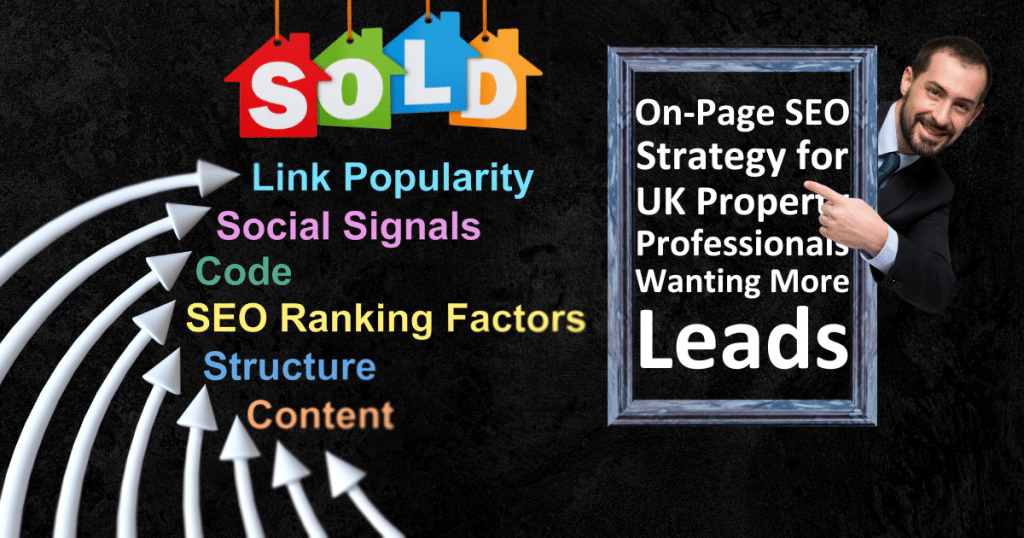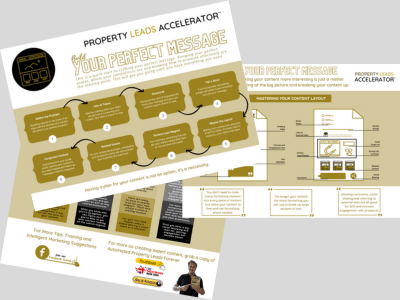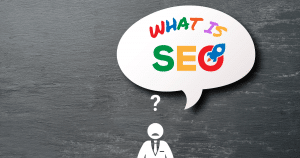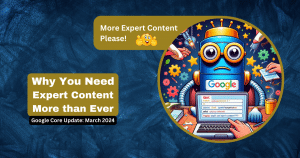Why do you need On-Page SEO tips for your property content?
Well, as a business owner working in the property industry, you already know that just having a website is not enough to attract visitors.
Your website must be optimised for search engines to make it visible to potential clients and have excellent content for them to consume once they get there.
This article will discuss tips for effective On-Page SEO in your property content.
Why On-Page SEO is Important for Property Content
On-page SEO is essential for property content because it helps increase your website’s visibility on search engines. Your property website is a hidden gem, brimming with top-notch content, but it’s lost in a sea of competitors.
What’s the point of creating outstanding property content if your target audience can’t even find it?
Effective on-page SEO is the start of answering all your problems.

It drives a steady stream of high-quality traffic to your website, translating into more leads and conversions. Thanks to your easily discoverable content, your target audience will be grateful for the improved user experience, leading to increased engagement and loyalty.
So why wait?
Start optimising your property content today and take your website to the next level!
Overview of a Property Blog Post
This blog post will provide tips for effective On-Page SEO in your property content. We will discuss the following topics:
- Benefits of effective On-Page SEO
- Understanding your target audience
- Conducting keyword research for property content
- Optimising your property content
- Optimising your property pages
- Improving your site structure
- Improving page load time
- Monitoring and analysing your On-Page SEO
Benefits of Effective On-Page SEO
On-page SEO is about proving to Google and other search engines that your content is well-written, easy to consume, and delivers what the searcher is looking for. While it may seem obvious to you what your content is all about, the crawlers sometimes need a little extra help. Effective On-Page SEO has several benefits, including:
Improved customer satisfaction

When people can easily find the information they’re looking for on your website, they’re more likely to trust you as an expert while increasing the chances they’ll like, comment, and share. This can also lead to repeat business and positive word-of-mouth marketing. A good experience on your website for your clients and potential prospects should be at the top of your list.
Increased website traffic
When your website ranks in the search results, more people searching for expert content, just like yours, will find you, your message, and discover your brand. When executed with a good content plan, this can lead to more leads and sales for your business.
Improved brand awareness
When your website is visible in search results, it helps to raise awareness of your brand and what you do. Improving your brand awareness will increase the likelihood of someone clicking on your content. Think about it: when you search for a solution and somebody you know pops up in the results, do you go to them first? I know I do.
Increased conversion rates
When people click through to your website and content because you pop up when they search for a problem they want to solve, they’re much more likely to be interested in what you have to offer. You’ll have a higher chance of converting those visitors into customers than ads to a cold audience.
Reduced advertising costs
Ranking on search engines is a goal for many businesses because it delivers a lot of targeted traffic at a relatively low cost. When you achieve this, you’ll know what converts organically, so when you add paid traffic into the mix, there will be a higher chance of you getting your targeting, message, and delivery right, which means higher engagement and conversions, and reducing your ad costs, should you be using them.
Organic traffic from search engines is the holy grail of lead generation. When you get this right, your business will change, forever. On-page SEO is a part of the process, so it’s worth understanding what it is and why you need it.
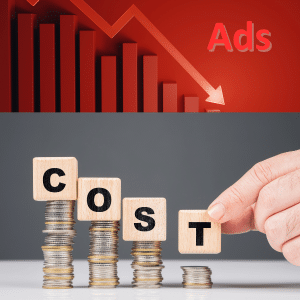
What is On-Page SEO?
On-page SEO is the process of optimising the content on your website so that it ranks higher in search engine results pages (SERPs).
To do this effectively, you’ll need to optimise the following elements:
Title tags
The title tag is the headline that appears in search results. Including your target keywords in your title tag is important, as this will help search engines understand what your page is about.
Meta description
The meta description is a brief description of your page that appears in the search results. Including your target keywords in your meta description is important, as this will help attract clicks from potential visitors.
Heading tag

Heading tags structure your content and make it easy for search engines to understand. Using your target keywords in your heading tags can also be good, as this will help search engines understand what your page is about. That said, it is not essential, particularly in lengthier content, since semantically related topics will almost certainly appear throughout and help clarify the purpose of your post.
Image alt text
This text appears when you hover over an image; including your target keywords in your image alt text where relevant is also helpful. This will help search engines understand what your image is about and the context in which you are using it.
Internal links
Internal links are links from one page on your website to another page on your website. They help search engines understand the structure of your website and how the pages on your website are related.
Your Content
While the elements above are applied to your content, it is also worth mentioning that it needs to be well-thought-out, well-written, and easy to consume. This means using white space, sub-headings, bullets, images, and other formatting to keep your content visually attractive.
Grab a copy of “Build Your Perfect Message” and see how to improve your blog layouts with this 3-page quick guide.
Understanding Your Target Audience
Before you create content for your property website, it is essential to identify your target audience. This will help you to create content that resonates with your audience, increasing engagement and conversions. To do this, you can conduct market research to understand your audience’s demographics, interests, and pain points.
Understanding the Search Intent of Your Target Audience
Once you have identified your target audience, it is essential to understand their search intent. This refers to the reason behind their search query. Understanding search intent helps you to create content that answers their questions, provides solutions, and meets their needs.

Creating Content that Resonates with Your Target Audience
After identifying your target audience and understanding their search intent, you can create content that resonates with them. Your content should be informative, engaging, and actionable. Additionally, it should be optimised for search engines by including relevant keywords.
Keyword Research for Property Related Content
Keyword research is essential for On-Page SEO because it helps you to identify relevant keywords to include in your content. This, in turn, makes it easier for search engines to understand what your content is about, improving its visibility on SERPs.
Tools for Keyword Research
Several tools can help you conduct keyword research, including Google Keyword Planner, SEMrush, and Ahrefs. These tools provide insights into keyword search volume, competition, and relevance.
Selecting the Right Keywords for Your Content

When selecting keywords for your content, choosing relevant keywords that match your content’s topic is essential. Additionally, aiming for long-tail, more specific keywords with lower competition would be best. This can make it more likely you’ll show up on page #1 of Google rather than being beaten by 200 more established competitors, for example.
Optimising Your Property Content
Your content’s headlines are essential for On-Page SEO because they help search engines understand your content’s topic. Additionally, they help to grab the attention of your target audience. When creating headlines, ensure they are descriptive and informative and include relevant keywords.
Using Keywords Effectively in Your Content
Including relevant keywords in your content is essential for On-Page SEO. However, you should avoid keyword stuffing, which can result in penalties from search engines. Instead, aim to use keywords naturally throughout your content.
Optimising Your Property Pages
When it comes to optimising your property pages for search engines, there are several things you can do to improve your On-Page SEO. One crucial factor is creating unique and descriptive meta titles and descriptions for each page. These snippets appear in search engine results, so they should accurately describe the content on the page and include relevant keywords.
Another technique you can use is schema markup for property content. This is a type of code that helps search engines better understand the content on your page. Adding star ratings and other information can make your listings stand out in search results.
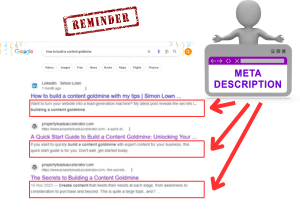
Optimising images and videos for search engines is also essential for On-Page SEO. This involves using descriptive file names and alt text that accurately describe the content of the image or video. Compressing your media files can also help improve page load times, another critical factor for On-Page SEO.
Improving Your Site Structure
A well-organized site structure is crucial for both users and search engines. Tags and categories are a good way of making your content easier to sort and find. Grouping your content into categories can also make it easier to know what to show people to read next. The easier it is to navigate your site and get relevant answers, the more likely people will stay and consume your content.
Creating user-friendly URLs that accurately reflect the content on your pages is also crucial for On-Page SEO. Short, descriptive URLs that include relevant keywords can help improve your rankings in search results.
Using breadcrumb navigation is another way to improve user experience and help search engines understand the structure of your site. This involves adding a trail of links at the top of your pages that show users where they are on your site and how they got there.
Creating an XML sitemap for your property website is vital for On-Page SEO. This is a file that lists all the pages on your site and helps search engines understand the structure of your site. Submitting your sitemap to search engines can also help ensure all your pages are correctly indexed.

If you have existing content that ranks on the search engines, DO NOT MESS AROUND WITH IT. Changing your site structure without fully understanding the impact it can have is likely to cause you to lose your existing rankings. You need to plan any changes to your site structure carefully and ensure that the search engines can still find your content once it has moved.
If, for any reason, you are unsure if your actions will negatively impact your rankings, get an expert to advise you first.
Improving Page Load Time:
While Page Speed is more often referenced under Technical SEO, adding a blog post to your website, for example, will give you a few opportunities to address a few of these elements.
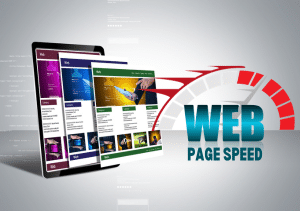
Page load time is an essential factor for On-Page SEO. Slow-loading pages can negatively impact user experience and lead to higher bounce rates. You can use several techniques to improve page load time, including optimising images and videos, compressing files, and using a content delivery network (CDN).
On this website, I use Imagify to compress all of my images. I cheat with videos by uploading them to YouTube and embedding them on the page. It’s not for everyone, but it works for me. 😉
Tools for measuring page load time, such as Google’s PageSpeed Insights and GTmetrix, can give you insights into how fast your pages are loading and provide recommendations for improving page speed.
Monitoring and Analysing Your On-Page SEO
Content marketing is a long-term strategy that requires a plan and consistent execution. One of the most important aspects of content marketing is tracking your results.
You can track several metrics to measure the success of your content.
Some of the most important metrics include:
- Website traffic: The number of visitors to your website.
- Page views: This is the number of pages visitors view on your website.
- Unique visitors: How many different people are visiting your website?
- Average time on page: What is the average amount of time visitors spend on each page of our website?
- Bounce rate: This is the percentage of visitors who leave your website after viewing only one page.
- Conversion rate: This is the percentage of visitors who take a desired action on your website, such as purchasing or signing up for a newsletter.
- Domain authority: Domain authority is a metric that measures the strength of a website’s domain name. A high domain authority indicates that a website will likely rank well in SERPs. You can track your domain authority using a tool like Moz.
- Page speed: Page speed is the amount of time it takes for a web page to load. A fast page speed is essential for user experience and SEO. Google will not put your content on page 1 if your website isn’t quick. You can test your page speed using Google’s PageSpeed Insights tool, amongst others.
- Core Web Vitals: Core Web Vitals is a set of three metrics that measure a web page’s loading performance, interactivity, and visual stability. These metrics are essential for SEO because Google uses them to determine the ranking of websites in SERPs. You can test your Core Web Vitals using Google’s PageSpeed Insights tool or GTMetrix.
Most metrics you’ll need to track will be available in Google Analytics. If you want to track specific elements, you can use a spreadsheet, a project management tool, or a content marketing platform like HubSpot.
Once you have a system, you need to track your metrics regularly. This will allow you to see how your content marketing efforts perform and make necessary adjustments to your strategy.
Tracking content metrics is an essential part of any successful content marketing strategy.
Let’s Get You Ranking
Effective On-Page SEO is crucial for property websites looking to improve search engine rankings and drive more traffic. You can create a successful On-Page SEO strategy that delivers results by understanding your target audience, conducting keyword research, optimising your content, improving your site structure, and monitoring your progress.

Remember always to put your users first and create high-quality, informative content that meets their needs.
Implement even a few of these recommendations, and you should start seeing improvements in your property site’s SEO. If you want more than just “an improvement”, you’ll want to apply everything here and go deeper into all areas of your SEO. Stay tuned; more will be on the way.
Good luck, and let me know if you have any other questions in the comments below.

